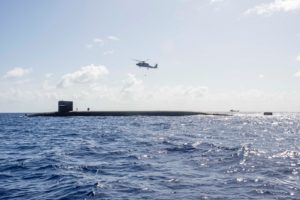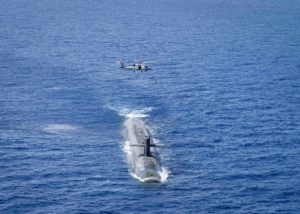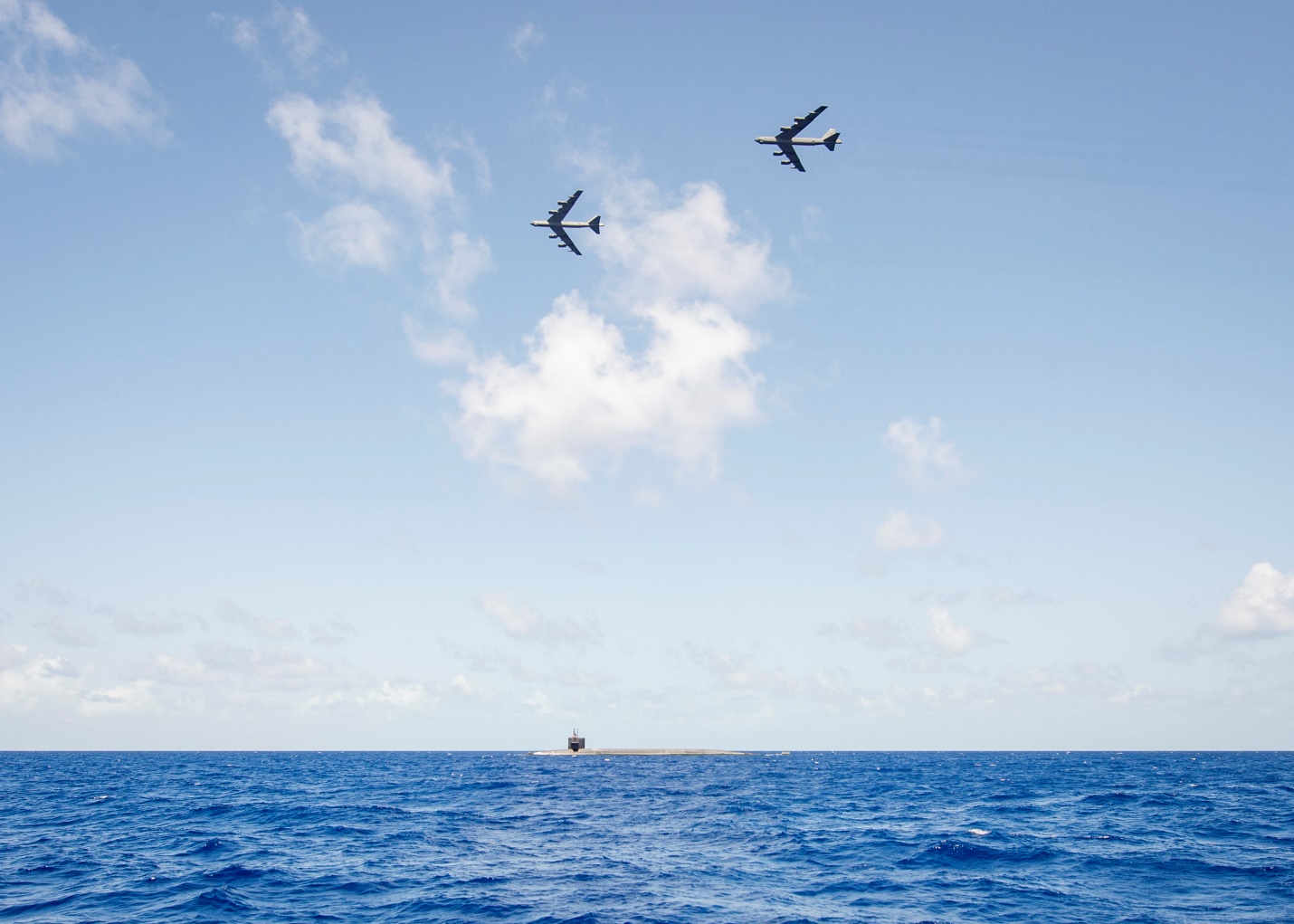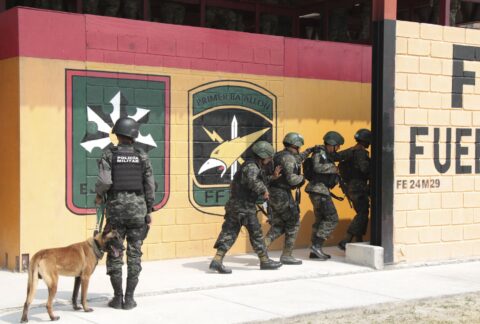Ballistic missile submarines and long-range bombers are two of the three legs of the nuclear triad maintained by the United States. Together with land-based intercontinental missiles, the three legs are linked by Nuclear Command, Control, and Communications (NC3) networking capabilities.
On August 18, U.S. strategic forces conducted a GLOBAL STORM exercise near the Bahamas in the western Atlantic Ocean. The GLOBAL STORM series of exercises are developed by U.S. Strategic Command (USSTRATCOM) to demonstrate and validate the interoperability, lethality, second-strike capability, and global presence of U.S. nuclear forces in conducting their strategic deterrence mission. During recent testimony to the House Armed Forces Committee, U.S. Navy Admiral Charles Richard, commander of USSTRATCOM, emphasized the key enabling nature of strategic deterrence: “Strategic deterrence enables every U.S. military operation around the world. Every operational plan in the department, and every other capability we possess rests on an assumption that strategic deterrence, and in particular nuclear deterrence, is holding. If that fails, nothing else in the Department of Defense works as planned. STRATCOM sets the most foundational of operating conditions to allow the rest of the joint force to accomplish its mission.”

During this GLOBAL STORM, two U.S. Air Force B-52 Stratofortress long-range bombers, from the 2nd Bomb Wing, and a U.S. Navy E-6B Mercury command and control aircraft, from Strategic Wing 1, worked together with the USS West Virginia, a U.S. Navy nuclear-powered ballistic missile submarine, to communicate and demonstrate the interoperability between the three sets of strategic capabilities. Submarines like the USS West Virginia remain underwater and undetected for months at a time while on patrol. Due to the strategic deterrent mission of these vessels, maintaining cross-service interoperability, positive command, control, and communication through NC3 capabilities, such as the E-6B Mercury, as well as security, from aircraft like the B-52s, is critical to their effectiveness.
At the conclusion of the communication and integration exercise portion of this GLOBAL STORM exercise, a second phase, demonstrating expeditionary logistics, was conducted using two SH-60 Seahawk helicopters from the U.S. Navy’s Helicopter Maritime Strike Squadron 60.
Nuclear-powered ballistic missile submarines are capable of cruising the seas for years before requiring refueling. The crews inside the submarines need more frequent refueling, requiring the vessels to return to port or rendezvous with a replenishment ship while at sea. These traditional resupply options are easy to observe and track, making the submarine vulnerable to hostile forces for an extended period of time.

A non-traditional resupply option was successfully demonstrated as the second part of this GLOBAL STORM exercise, using a pair of SH-60 Seahawk helicopters to rendezvous with the USS West Virginia to deliver resupply packages. Along with extending submarine patrol time, this non-traditional resupply method adds the benefit of reducing human-to-human contact between members of an isolated submarine crew and the crews of replenishment ships or port supply personnel
The strategic forces of the United States are versatile, lethal, and vigilant in their perpetual mission to maintain deterrence.









